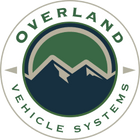7 Overland Trails in the U.S. Find a hardy vehicle and hit the Off Road
Think of overlanding, the latest craze in the adventure vehicle world, as backpacking, but with your car. Overland Journal (the go-to source on the subject) defines the sport as “self-reliant adventure travel to remote destinations where the journey is the primary goal.” It comes down to traveling long distances on rough roads to a remote destination in an off-highway-capable vehicle (bikes included).
While a tricked out overlanding vehicle like a 70 Series Land Cruiser or a Land Rover Defender is highly encouraged, your Subaru can probably get you farther than you think (provided you pack accordingly). The big draw is covering lots of distance off the beaten path with everything you need to survive. So, once you find that Synchro or CJ5 you’ve been scouring Craigslist for, here’s a list of trails that should be on your overland bucket list:
The Trans-America Trail
Tennessee to Oregon
Motorcycle enthusiast Sam Corriero developed the Trans-America Trail (TAT) in an attempt to create a coast-to-coast off-pavement motorcycle route. The TAT winds nearly 5,000 miles on a connection of dirt, forest service, gravel, and jeep roads from Southeastern Tennessee to Southwestern Oregon. Corriero says the TAT is not for everyone and requires a “special ‘love’ for a motorcycle.” In 2013 a group of Land Rover LR4’s completed the route, proving that it can be done in a larger vehicle.
The Alpine Loop Scenic Byway
Silverton, Colorado
The Alpine Loop starts in Silverton, Colorado and winds 63 miles through the heart of the San Juan Mountains. Nestled between highways 550 and State Road 149, the route is closed during the winter, and the high alpine environments of Engineer and Cinnamon Passes (both over 12,000 feet) require a high-clearance four-wheel-drive vehicle. The entire loop takes around four to six hours, and you’ll pass seven abandoned mining towns along the way, along with plenty of opportunities for hiking and camping. There are more challenging routes in the area, like the Black Bear Pass Road route, but if you’re looking for a mid-length overland route with spectacular mountain views in the Rockies, this is your trail.
The Rubicon Tr
Georgetown, California
There’s a reason Jeep named their most off-road worthy model of the Wrangler the Rubicon. The Rubicon Trail runs 22 miles from Georgetown to Tacoma, just west of Lake Tahoe, over slick granite and through classic Sierra Nevada scenery. This isn’t a trip for those worried about scratching their vehicle, and the Rubicon Trail Foundation recommends several vehicle modifications like larger tires and a lift kit to prevent damage. The reward for all that preparation is a few days of camping along one of the most famous overland routes in the world.
Cape Lookout National Seashore
North Carolina’s Outer Banks
North Carolina’s barrier islands provide an incredible outdoor playground, including some fantastic overland routes if you know where to go. Our favorite: the islands that make up the 56 mile long Cape Lookout National Seashore, North Core and South Core Banks. South Core is the more remote of the two—you'll have to ferry your vehicle from the mainland. There are no paved roads, and you can camp anywhere you’d like along the beach so long as you don’t drive through the sand dunes.
The Dalton Highway
Alaska
If you’re reading this, chances are you’ve already heard of the Dalton Highway. The mostly gravel road in Northern Alaska stretches 414 miles from Livengood to Deadhorse. It was originally built as a service road for the Trans-Alaska Pipeline and is still considered one of the most dangerous roads in the U.S., mainly because of the lack of services and cell phone reception along the entire route. The payoff for braving the Dalton? You get to see some of the most spectacular wilderness in the country, traversing the Brooks Range and crossing the Yukon River in route to the Arctic Ocean.
The Mojave Road
Mojave National Preserve, California
The 140-mile Mojave Trail is a classic U.S. desert route that usually takes two to four days to traverse and requires four-wheel drive. Originally a Native American trade route and later a wagon trail, the rough and sandy track runs east to west through the Mojave National Preserve in California, crossing several mountain ranges before terminating near Barstow, California.

